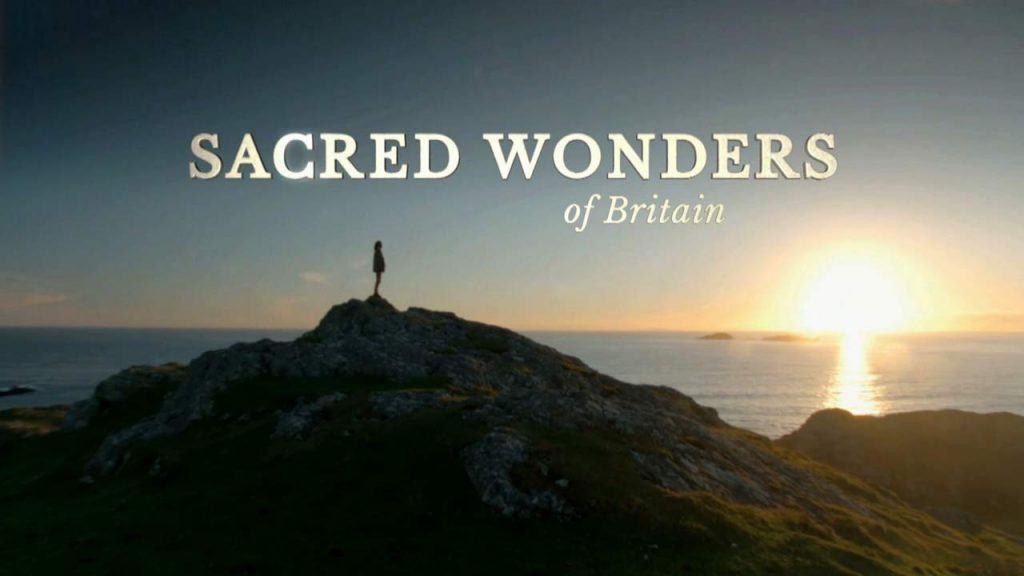Sacred Wonders of Britain episode 1: In the first of a three part series, Neil Oliver sets off on in search of the Sacred Wonders of Britain. What was it about Britain’s rich and varied landscape that inspired our ancestors to express their beliefs by reshaping the world around them? What did they see in our countryside that led them to deem some places more sacred than others and why are we still drawn back to those places today?
Neil goes in search of the very first stirrings of religion in Britain. In Nottinghamshire he discovers clues to a world of magic and ritual etched into the rock of Creswell Crags by Ice Age hunters. In the south of England and on the Scottish borders, great tombs are evidence of ancestor worship among the first farmers of the Neolithic era and an extraordinary discovery in Herefordshire reveals what really lies beneath their burial mounds.
From the heart of our cities to the furthest reaches of our islands, it’s a journey to reveal the sacred face of Britain – an ancient landscape of belief and ritual that still lies hidden just below the surface of our modern world.
In the flint mines of Grimes Graves in Norfolk, he discovers how Stone Age miners carried their religion deep underground. Finally, in the great stone circle and henge of Avebury and the extraordinary monuments of Orkney, he discovers how a new age of belief swept away the old religions and changed Britain for ever.
Sacred Wonders of Britain episode 1
Neil Oliver (born 21 February 1967) is a Scottish television presenter, archaeologist, historian and author. He is best known as the presenter of several documentary series on archaeology and history, including A History of Scotland, Vikings, and Coast. He is also an author of popular history books and historical fiction. Oliver first appeared on television in the 2002 BBC Two series Two Men in a Trench, in which he and archaeologist Tony Pollard visited historic British battlefields. He was also a co-author of the two books accompanying the series. In 2006, he presented The Face of Britain for Channel 4 and Scotland’s History: The Top Ten for the BBC. Early in his career he also appeared on The One Show and Time Team.
Oliver was a co-presenter of the first series of Coast in 2005, and replaced Nicholas Crane as the show’s main presenter for the second, third, fourth, and fifth series. He also presented Coast Australia (2013) and Coast New Zealand (2016). From 2006 to 2018 he presented a number of history documentaries for the BBC, including A History of Scotland (2008) and Sacred Wonders of Britain (2013). In 2012, he wrote and presented Vikings, a three-part series on the Vikings.
In April 2021, he was announced as a presenter for GB News. Oliver hosts a weekly current affairs and interview programme on the channel.
Creswell Crags
Creswell Crags is an enclosed limestone gorge on the border between Derbyshire and Nottinghamshire, England, near the villages of Creswell and Whitwell. The cliffs in the ravine contain several caves that were occupied during the last ice age, between around 43,000 and 10,000 years ago. Its caves contain the northernmost cave art in Europe. The evidence of occupation found in the rich series of sediments that accumulated over many thousands of years is regarded as internationally unique in demonstrating how prehistoric people managed to live at the extreme northernmost limits of their territory during the Late Pleistocene period.
The caves contain occupation layers with evidence of flint tools from the Mousterian, proto-Solutrean, Creswellian and Maglemosian cultures. They were seasonally occupied by nomadic groups of people during the Upper Palaeolithic and Mesolithic periods. Evidence of Neolithic, Bronze Age, Roman and post-medieval activity has also been found there. There is evidence of Neanderthal occupation 50,000–60,000 years ago, a brief Gravettian occupation around 32,000 years ago and use of all the main caves during the Magdalenian around 14,000 years ago. The site is open to the public and has a visitor centre with a small museum of objects associated with the caves, including a stuffed cave hyena.




